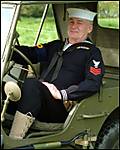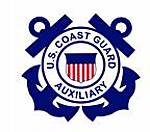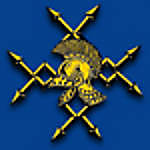On another thread, Frank brought up a good point about not being able to sort out the Navy's alphabet soup for ship designations.
After a little digging, here's a list of USN ship designations. If you would like a copy, pm me your email and I will send it to you
CV Fleet Carrier
CVN Nuclear Fleet Carrier
CVL Light Fleet Carrier
CVE Escort Carrier
BB Battleship
CB Battlecruiser
CA Heavy Cruiser
CL Light Cruiser
CLAA Light Anti-aircraft cruiser
CG Guided missile cruiser
DD Destroyer
DDG Guided missile destroyer
DE Destroyer Escort
FFG Guided missile frigate
LCS Littoral Warfare vessel
SS Submarine
SSN Nuclear submarine
SSBN Ballistic nuclear submarine
AD Destroyer Tender
AR Repair Ship
ARB Battle Damage Repair Ship
ARC Cable Repairing or Laying Ship
ARG Internal Combustion Engine Repair Ship
ARH Heavy-hull Repair Ship
ARL Landing Craft Repair Ship
ARSD Salvage Lifting Vessel
ARST Salvage Craft Tender
ARV Aircraft Repair Ship
ARVH Aircraft Repair Ship, Helicopter
AS Submarine Tender
ACS Crane Ship
AK Cargo Ship
AKD Cargo Ship Dock
AKL Light Cargo Ship
AKN Net Cargo Ship
AKR Vehicle Cargo Ship(Large, Medium Speed, Roll-on/Roll-off Ship)
AKS General Stores Issue Ship
AKV Aircraft Transport
AG Miscellaneous Auxiliary
AGB Icebreaker
AGDS Deep Submergence Support Ship
AGEH Hydrofoil Research Ship
AGER Environmental Research Ship
AGF Command Ship
AGM Missile Range Instrumentation Ship
AGMR Major Communications Relay Ship
AGOR Oceanographic Research Ship
AGOS Ocean Surveillance Ship
AGP Motor Torpedo Boat Tender
AGR (YAGR) Radar Picket Ship
AGS Survey Ship
AGSC Coastal Surveying Ship
AGTR Technical Research Ship
AE Ammunition Ship
AF Stores Ship
AFS Combat Stores Ship
AKE Dry Cargo/Ammunition Ship
AO Fleet Oiler / Underway Replenishment Oiler
AOE Fast Combat Support Ship
AOG Gasoline Tanker
AOR Replenishment Fleet Tanker
AP Transport
APB Self-propelled Barracks Ship
APC Coastal Transport
APH Evacuation Transport
APL Barracks Craft (non-self propelled)
APM Mechanized Artillery Transport
APV Transport and Aircraft Ferry
ARS Rescue and Salvage Ship
ASR Submarine Rescue Vessel
AT Fleet Tug
ATA Auxiliary Fleet Tug
ATF Fleet Ocean Tug
ATO Fleet Tug (Old)
ATR Rescue Ocean Tug
ATS Salvage and Rescue Ship
AV Seaplane Tender
AVB Advance Aviation Base Ship
AVD Seaplane Tender, Destroyer
AVM Guided Missile Ship
AVP Small Seaplane Tender
AVS Aviation Stores Issue Ship
AVT Auxiliary Aircraft Landing Training Ship
AZ Lighter-than-Air Aircraft Tender
AB Crane Ship
AC Collier
ADG Degaussing Ship
AFD / ARD Dry Docks
AH Hospital Ship
AN Net Laying Ship
AOT Oil Transporter
AW Distilling Ship
IX Miscellaneous Unclassified
HSV High Speed Vessel (HSV)
AGC/LCC Amphibious Force Command Ship
AKA/LKA Amphibious Cargo Ship
APA/LPA Amphibious Transport
APD High Speed TransportLPR Amphibious Transport, Small
IFS/LFR Inshore Fire Support Ship
LCG(L) Landing Craft Guns (Large)
LCI Landing Craft Infantry
LCS(L)(3) Landing Craft Support (Large) (Mark 3)
LSSL Landing Ship Support, Large
LCT Landing Craft Tank
LCU Landing Craft Utility
LHA Amphibious Assault Ship (General Purpose)
LHD Amphibious Assault Ship (Multi Purpose)
LPD Amphibious Transport Dock
LPH Amphibious Assault Ship (Helicopter)
LSD Dock Landing Ship
LSM Medium Landing Ship
LSM(R) Landing Ship Medium (Rocket)
LST Tank Landing Ship
LSV Vehicle Landing Ship
ACM Auxiliary Minelayer
CM Minelayer
CMc Coastal Minelayer
DM Light Minelayer
MMC Coastal Minelayer
MMF Fleet Minelayer
SM Minelaying Submarine
AM Minesweeper
AMc Coastal Minesweeper
AMCU Coastal Minesweeper (Underwater Locator)
AMS Motor Minesweeper
DMS Highspeed/Destroyer Minesweeper
MMD Fast Minesweeper
MSC Coastal Minesweeper
MSC(O) Coastal Minesweeper (Old)
MSF Fleet Minesweeper
MSO Ocean Minesweeper
MSS Minesweeper (Special Device)
MSI Inshore Minesweeper
YMS Auxiliary Motor MinesweeperBYMS British Motor Minesweeper
MCS Mine Countermeasures Support Ship
MCM Mine Countermeasures Ship
PC - Patrol Craft Coastal
PE - Eagle Class Patrol Vessel
PF - Patrol Frigate
PHM - Patrol Combatant-Missile (Hydrofoil)
PY - Patrol Yacht
PYc - Coastal Patrol Yacht
PG - Gunboat
PGH - Gunboat (Hydrofoil)
PGM - Motor Gunboat
PR - River Gunboat
SC - Submarine Chaser (110')
PC - Submarine Chaser (173')
PCE - Patrol Craft Escort
PCER Patrol Craft Rescue Escort
PCS - Patrol Craft Sweeper
PCH - Submarine Chaser (Hydrofoil)
ID - Numbered Civilian Vessels
SP - Section Patrol Craft
ABSD Advance Base Sectional Dock
AFD Auxiliary Floating Dry Dock
AFDB Large Auxiliary Floating Dry Dock
ARDC Concrete Auxiliary Repair Dock
AFDL Small Auxiliary Floating Dry Dock
AFDM Medium Auxiliary Floating Dry Dock
ARD Auxiliary Repair Dry Dock
ARDM Medium Auxiliary Repair Dry Dock
YFD Yard Floating Dry Dock
YT District Harbor Tug
YTB District Harbor Tug Large
YTL District Harbor Tug Small
YTM District Harbor Tug Medium
YTN District Net Tender Tug
YMT Yard Motor Tug
YO Fuel Oil Barge
YOG (self-propelled) Gasoline Barge
YOGN (non-self-propelled) Gasoline Barge
YON (non self-propelled) Fuel Oil Barge
YOS (non self-propelled) Oil Storage Barge
YW (self-propelled) Water Barge
YWN (non-self-propelled) Water Barge
YF Covered Lighter
YFR Refrigerated Covered Lighter
YFRT Range Tender
YFU Harbor Utility Craft
YG Garbage Lighter
YA Ash Lighter
YC Open/Covered Lighter
YF / YFN Covered Lighter
YFNB Large Covered Lighter
YFND Dry Dock Companion Craft
YSR Sledge Removal Barge
YAG Miscellaneous Auxiliary Service Craft
YDT Diving Tender
YFB Ferryboat or Launch
YH Ambulance Boat
YLLC Light Salvage Lift Craft
YN Yard Net Tender
YP Patrol Craft
YSD Seaplane Wrecking Derrick
YTT Torpedo Trials Craft
YV Drone Aircraft Catapult Control Ship
YCF Car Float
YD Floating Crane
YDT Diving Tender
YFP Floating Power Barge
YHB House Boat
YHLC Salvage Lifting Craft, Heavy
YM Dredge
YNG Gate Craft
YPD Floating Pile Driver
YR Floating Workshop
YRB Submarine Repair and Berthing Barge
YRDH Floating Dry Dock Workshop (Hull)
YRBM Repair Berthing and Messing Barge
YRDM Floating Dry Dock Workshop (Machinery)
YRR Radiological Repair Barge
YRST Salvage Craft Tender
You are viewing the archived version of the site.
Go to modelshipwrights.com for the current dynamic site!
Go to modelshipwrights.com for the current dynamic site!
Research & Resources
Discuss on research, history, and issues dealing with reference materials.
Discuss on research, history, and issues dealing with reference materials.
Hosted by Jim Starkweather
The US Navy's Ship Alphabet Soup
Posted: Wednesday, June 27, 2007 - 06:04 AM UTC
Posted: Wednesday, June 27, 2007 - 06:12 AM UTC

Dedication above and beyond the call of duty.
wildspear

Joined: April 03, 2007
KitMaker: 960 posts
Model Shipwrights: 901 posts

Posted: Wednesday, June 27, 2007 - 06:28 AM UTC
GATOR!!!!!!
your a hero in the rough, just printed that and its going above the work bench.
your a hero in the rough, just printed that and its going above the work bench.

redshirt

Joined: January 26, 2007
KitMaker: 270 posts
Model Shipwrights: 154 posts

Posted: Wednesday, June 27, 2007 - 06:44 AM UTC
A useful list there, thanks Gator. 

Posted: Wednesday, June 27, 2007 - 08:31 AM UTC
Thanks Gator,
Wierd that the US designation for a Battlecruiser is CB but in the UK its BC.
Ciao
Luciano
Wierd that the US designation for a Battlecruiser is CB but in the UK its BC.
Ciao
Luciano
Posted: Wednesday, June 27, 2007 - 09:47 AM UTC
Quoted Text
Thanks Gator,
Wierd that the US designation for a Battlecruiser is CB but in the UK its BC.
Ciao
Luciano
An interesting note is the designation of fleet carriers, CV. The "C" is because the first carriers were built on cruiser hull, Lexington and Saratoga were to be battlecruisers - CC. "V" is the navy's designation for heavier than air aircraft.
Halfyank

Joined: February 01, 2003
KitMaker: 5,221 posts
Model Shipwrights: 1,821 posts

Posted: Wednesday, June 27, 2007 - 03:13 PM UTC
Quoted Text
Thanks Gator,
Wierd that the US designation for a Battlecruiser is CB but in the UK its BC.
Ciao
Luciano
There is constant controversy about the actual designation of the Alaska class CBs. As far as I know they were the only ships given the CB classification. Most sources say the USN never called them Battlecruisers, but rather Large Cruisers. Their main plan function was to kill the big cruisers the Japanese. Basically the USN never did make a true Battlecruiser, just the planned Lexington class. Who knows why they called them CC.
Great Job Kenny. I'm sure it took a good deal of work.
thathaway3

Joined: September 10, 2004
KitMaker: 1,610 posts
Model Shipwrights: 566 posts

Posted: Wednesday, June 27, 2007 - 04:48 PM UTC
Quoted Text
Most sources say the USN never called them Battlecruisers, but rather Large Cruisers.
I pulled out my trusty "Ships and Aircraft of the US Fleet, Victory Edition" and that's exactly what this pretty much semi-official reference calls them. They are never identified as "Battle Cruisers".
Interestingly, Fahey's books also indicate the designation "CVB" for the three ships of the Midway Class calling them "Large Carriers". This designation was also planned for the never built "United States" which was planned to have been the CVB-58.
It appears that once the Forrestal was built, (and ALL carriers were "large") this designation was dropped.
What happened next was the Navy split the "attack" mission and the "anti-submarine" mission out and rather than the Carrier Air Group/Wing being responsible for both these missions, they placed the ASW type aircraft on board most of the modernized Essex Class ships and these were designated as "CVS" indicating the anti-submarine role (with VS and HS squadrons embarked).
Five of the Essex class and all the post war ships were designated as "CVA" (or CVAN) indicating the attack role, and they embarked mostly fighters and attack planes (VF and VA).
With the retirement of the Essex class ships post-Vietnam, the Carrier Wings were reorganized to handle both missions from a single deck and they all went back to being just plain CVs
Tom
wildspear

Joined: April 03, 2007
KitMaker: 960 posts
Model Shipwrights: 901 posts

Posted: Wednesday, June 27, 2007 - 09:30 PM UTC
thathaway3,
All I can sya to that is "you guys know your stuff". You, Halfyank, and gator made great post and very informative.
All I can sya to that is "you guys know your stuff". You, Halfyank, and gator made great post and very informative.

Posted: Thursday, June 28, 2007 - 06:47 AM UTC
Rodger and Tom,
Thanks for filling in the details. I was aware that the Alaska class were classed as Large Cruiser but I had thought (wrongly) that the US had had battlecruisers. Something I have learnt today.
Don't know if you are aware but the current small carriers in the RN have the designation CVS and as built were known as "Through deck cruisers"
Ciao
Luciano
Thanks for filling in the details. I was aware that the Alaska class were classed as Large Cruiser but I had thought (wrongly) that the US had had battlecruisers. Something I have learnt today.
Don't know if you are aware but the current small carriers in the RN have the designation CVS and as built were known as "Through deck cruisers"
Ciao
Luciano
Posted: Thursday, June 28, 2007 - 07:17 AM UTC
Here's a comparison of battlecruisers of the time to the Alaska Class:
Hood ~ 860'
Kongo ~ 704' (Built as a battlecruiser. Often mislabled a battleship)
Scharnhorst ~ 770'
Lexington ~ 874' (If completed as CC-1)
Alaska ~ 808'
So, as a large cruiser, the Alaska would have been a mid sized battlecruiser.
Hood ~ 860'
Kongo ~ 704' (Built as a battlecruiser. Often mislabled a battleship)
Scharnhorst ~ 770'
Lexington ~ 874' (If completed as CC-1)
Alaska ~ 808'
So, as a large cruiser, the Alaska would have been a mid sized battlecruiser.
Halfyank

Joined: February 01, 2003
KitMaker: 5,221 posts
Model Shipwrights: 1,821 posts

Posted: Thursday, June 28, 2007 - 01:15 PM UTC
Quoted Text
Here's a comparison of battlecruisers of the time to the Alaska Class:
Hood ~ 860'
Kongo ~ 704' (Built as a battlecruiser. Often mislabled a battleship)
Scharnhorst ~ 770'
Lexington ~ 874' (If completed as CC-1)
Alaska ~ 808'
So, as a large cruiser, the Alaska would have been a mid sized battlecruiser.
All the ships you mention Kenny, with the exception of Lexington, really blur the line between battlecruisers and battleships.
Hood was always classified as a BC, but the case can be made she was really the first fast battleship. Her protection, in proportion to her size, was the same as the Queen Elizabeth class BBs, which were certainly BBs.
Kongo was also classified as a BC, but after her modernization a good case can be made that she was a fast BB. Incidentally the Japanese certainly distinguished the Kongos as BCs, as they were named after mountains, like most heavy cruisers, and not provinces, as the BBs were.
Scharnhorst is probably the hardest to classify. Traditionally a BC traded armor for speed. The "twins" traded guns for speed and armor. The Germans classified them as BBs, and if they had had the 11" guns replaced with 15" most people would probably call them smaller BBs.
Lexington was a true BC, very lightly armored, heavily armed, and pretty fast. Depending on which design drawing you see she might have also been really ugly, with up to seven, count em, seven stacks!
Alaska is also very hard to classify. Traditionally BCs are really pretty badly balanced. Heavy guns, light armor, high speed. The armor they generally have is generally fairly heavy side armor belts, and very thin decks. Hood's side belt, for example, was nearly strong enough to protect against her own guns, like a BB. Alaska's side belt couldn't come close to protecting against her own guns. Now if you think of the Baltimore class, and just give her some steroids, to increase her size, the proportion of the amount of weight given to guns, armor, and speed, is pretty close to the Alaska. So instead of being a badly balanced capital ship, like most BCs were, the Alaska is a pretty well balanced, though very large, cruiser.
thathaway3

Joined: September 10, 2004
KitMaker: 1,610 posts
Model Shipwrights: 566 posts

Posted: Thursday, June 28, 2007 - 04:43 PM UTC
Rodger, excellent analysis and spot on.
Here's the quote about the Alaska class taken from the "Victory Edition" of Fahey's "Ships and Aircraft"
"Ships of battleship size with lean cruiser-lines, buit as replies to Germany's 26,000-ton SHARNHORST and GNEISENAU. The ill-fated Nazi CB's carried nine 11-inch-50's. They had 80,000-h.p. turbine plants, cruising diesels, triple screws, were rated at 28 knots. The 27,500-ton ALASKAs carry nine 12-inch-50's of a new Mark. They have 150,000-h.p. General Electric geared turbines, four screws, better 30 knots. Steam is supplied by eight Babcock & Wilcox boilers. Hull and machinery in CB's closely similar to Essex Class CV's"
(Note: The only US BB armed with12" 50s in WW II was the Arkansas, BB-33. Everything else was either 14" or 16". By comparison, every US CA was armed with 8" guns. So what you wind up with is a ship almost as long as an Iowa class battleship and just as fast, but much lighter, and significantly longer and almost twice has heavy as a "heavy" cruiser, with guns right between the battleships (at about 16") and the cruisers at 8".)
Tom
Here's the quote about the Alaska class taken from the "Victory Edition" of Fahey's "Ships and Aircraft"
"Ships of battleship size with lean cruiser-lines, buit as replies to Germany's 26,000-ton SHARNHORST and GNEISENAU. The ill-fated Nazi CB's carried nine 11-inch-50's. They had 80,000-h.p. turbine plants, cruising diesels, triple screws, were rated at 28 knots. The 27,500-ton ALASKAs carry nine 12-inch-50's of a new Mark. They have 150,000-h.p. General Electric geared turbines, four screws, better 30 knots. Steam is supplied by eight Babcock & Wilcox boilers. Hull and machinery in CB's closely similar to Essex Class CV's"
(Note: The only US BB armed with12" 50s in WW II was the Arkansas, BB-33. Everything else was either 14" or 16". By comparison, every US CA was armed with 8" guns. So what you wind up with is a ship almost as long as an Iowa class battleship and just as fast, but much lighter, and significantly longer and almost twice has heavy as a "heavy" cruiser, with guns right between the battleships (at about 16") and the cruisers at 8".)
Tom

dlgn25
Vendor

Joined: June 17, 2004
KitMaker: 398 posts
Model Shipwrights: 292 posts

Posted: Wednesday, August 13, 2008 - 05:48 AM UTC
I note that someone has already caught the CVA and CVA(N) designations. When I served, Enterprise was a CVA(N), not a CVN.
I may have missed it, but there were also the DL, DLG and DLG(N) designations. The designation began with the Destroyer Leaders, large destroyers that were intended to be destroyer squadron flagships. By the time I served (in USS BAINBRIDGE [DLG(N)-25]), they were no longer called Destroyer Leaders, but were instead frigates, with the "G" indicating guided missile. Thus a DLG was a Guided Missile Frigate, while the DLG(N)s were Nuclear-Powered Guided Missile Frigates. During the time I was in, the format of BAINBRIDGE's designator changed from DLG(N) to DLGN (for reasons known only to someone at BUSHIPS, probably). Similarly, ENTERPRISE's changed from CVA(N) to CVAN.
Ultimately, with the retirement of all the gun cruisers, the DLGs changed hats again to become CGs or CGNs. I always suspected that it was done merely for political reasons, since the Soviet Navy had cruisers and we no longer did (couldn't let the cruiser gap widen, could we?).
I may have missed it, but there were also the DL, DLG and DLG(N) designations. The designation began with the Destroyer Leaders, large destroyers that were intended to be destroyer squadron flagships. By the time I served (in USS BAINBRIDGE [DLG(N)-25]), they were no longer called Destroyer Leaders, but were instead frigates, with the "G" indicating guided missile. Thus a DLG was a Guided Missile Frigate, while the DLG(N)s were Nuclear-Powered Guided Missile Frigates. During the time I was in, the format of BAINBRIDGE's designator changed from DLG(N) to DLGN (for reasons known only to someone at BUSHIPS, probably). Similarly, ENTERPRISE's changed from CVA(N) to CVAN.
Ultimately, with the retirement of all the gun cruisers, the DLGs changed hats again to become CGs or CGNs. I always suspected that it was done merely for political reasons, since the Soviet Navy had cruisers and we no longer did (couldn't let the cruiser gap widen, could we?).
Grumpyoldman

Joined: October 17, 2003
KitMaker: 15,338 posts
Model Shipwrights: 981 posts

Posted: Wednesday, August 13, 2008 - 10:51 AM UTC
You missed the rarely used CVT and AVT designations. 


oceano75

Joined: August 20, 2010
KitMaker: 22 posts
Model Shipwrights: 22 posts

Posted: Sunday, September 26, 2010 - 02:56 PM UTC
I would hazard one more rarely used overlooked designation.
Back when I was Ops Officer in CGC Dallas I attended Navy shiphandling school. Attending the class with us were 2 Army officers. The LT presenting one lesson constantly referred to BGBs. One BGB did this so the other BGB had to do that. Well finally one of the Army guys raised his hand and said
that to prep for the class he had researched Navy ship designations so he had an idea what was being discussed. He knew everything from DD so CV, but had never come across a BGB. In exasperation he asked "What is a BGB??" To which the LT replied "Big Gray Boat".
Back when I was Ops Officer in CGC Dallas I attended Navy shiphandling school. Attending the class with us were 2 Army officers. The LT presenting one lesson constantly referred to BGBs. One BGB did this so the other BGB had to do that. Well finally one of the Army guys raised his hand and said
that to prep for the class he had researched Navy ship designations so he had an idea what was being discussed. He knew everything from DD so CV, but had never come across a BGB. In exasperation he asked "What is a BGB??" To which the LT replied "Big Gray Boat".
retiredbee2

Joined: May 04, 2008
KitMaker: 757 posts
Model Shipwrights: 29 posts

Posted: Sunday, September 26, 2010 - 05:15 PM UTC
The ship that I served on was born a BB , battleship and in construction morfed into an attack carrier, CVA-42. They layed the keel and started the hull out to be a battleship and then they changed their minds and decided that the Navy needed carriers more than Battleships. So was the birth of the Franklin D Roosevelt, a Midway class carrier.
 |


















